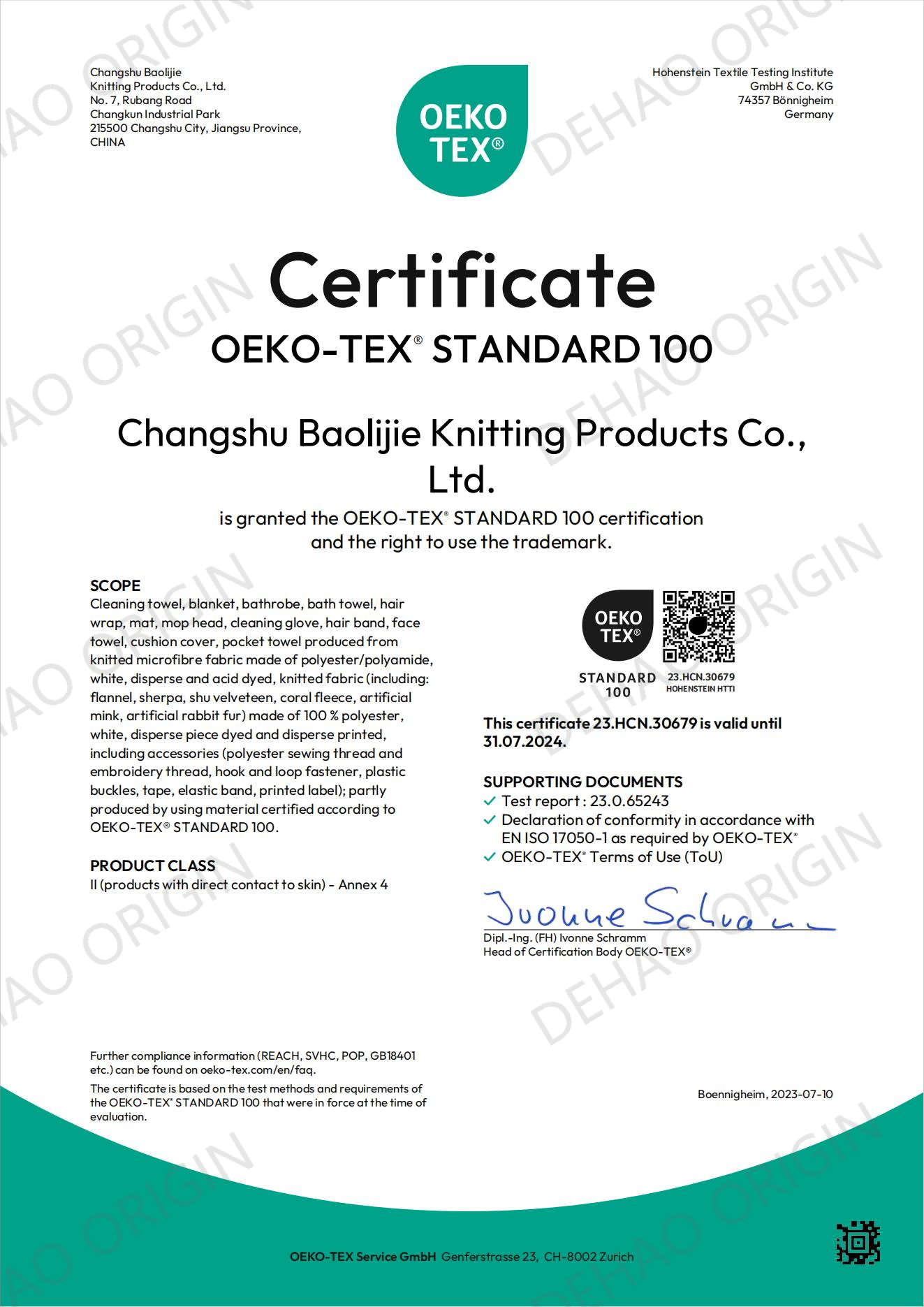How does our factory reduce pollution and conserve the planet?

-
Sustainable Material Sourcing: Source sustainable materials for our microfiber production. This might involve using recycled polyester or other eco-friendly materials as the base for microfiber cloths.
-
Reduced Chemical Usage: Develop and use microfiber materials that require fewer or no chemical treatments during production. This reduces the release of harmful chemicals into the environment.
-
Efficient Manufacturing Processes: Implementing energy-efficient manufacturing processes can help us reduce their carbon footprint. This involve optimizing production lines, using renewable energy sources, and minimizing energy waste.
-
Waste Reduction and Recycling: Minimize waste generated during the manufacturing process. Additionally, we can implement recycling programs to reuse materials, such as excess microfiber scraps, to reduce the need for virgin materials.
-
Water Conservation: Water-intensive processes in microfiber production, such as dyeing and finishing, can be optimized to reduce water consumption. Implementing water-saving technologies and wastewater treatment systems can help minimize the impact on water resources.
-
Efficient Packaging: Eco-friendly packaging solutions that use minimal materials and are easily recyclable. This reduces the environmental impact of packaging waste.
-
Microplastic Mitigation: Microfiber factories can explore ways to minimize the shedding of microplastics from their products. This might involve using innovative weaving techniques or developing coatings that reduce microfiber shedding during use and washing.
-
Lifecycle Analysis: Conducting a lifecycle analysis of microfiber products can help factories identify the stages of production and use with the highest environmental impact. This analysis can guide efforts to reduce pollution at critical points in the product's lifecycle.
-
Collaboration and Certification: Collaborate with environmental organizations and certification bodies to ensure that their practices align with recognized environmental standards. We are certified by OEKO-TEX which demonstrate a commitment to sustainable and responsible production.
-
Consumer Education: Educate consumers about the proper use and care of microfiber cleaning products. This can extend the lifespan of products and reduce the frequency of replacements, thereby reducing overall waste.
-
End-of-Life Management: Explore options for the responsible disposal or recycling of microfiber products at the end of their useful life. This might involve developing take-back programs or partnering with recycling facilities.
-
Continuous Improvement: Implementing a culture of continuous improvement allows factories to regularly assess their practices and identify areas for further environmental optimization.







